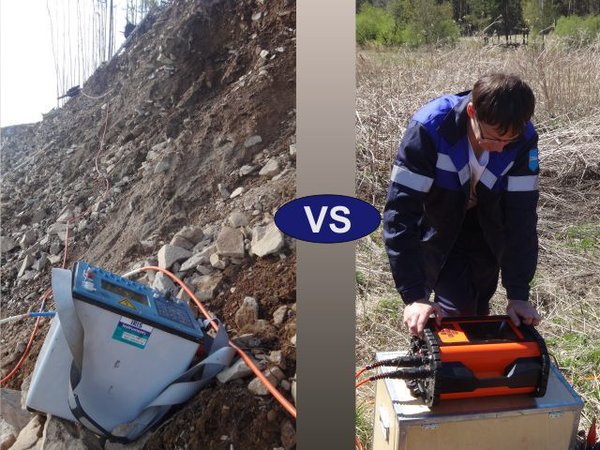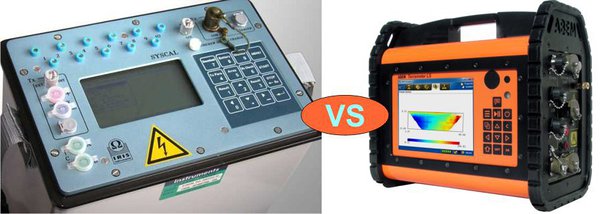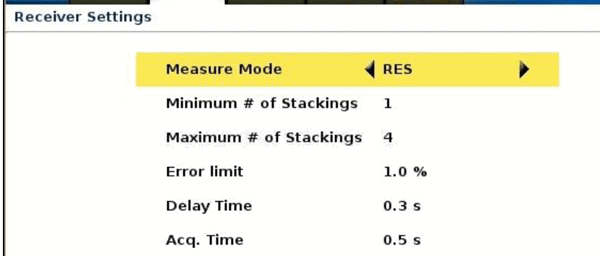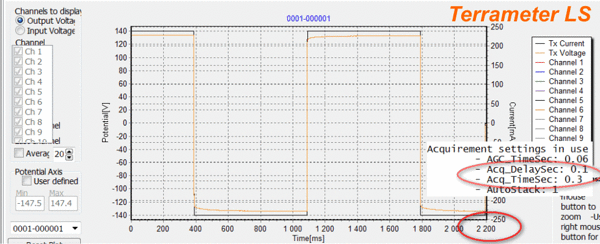Measurement speeds comparison for popular stations Syscal Pro (IRIS Instrument, France) and Terrameter LS (AVEM, Sweden). This is my impression after field works with both popular ETR stations.
Terrameter LS is about 10 years younger than Syscal Pro (2010 vs. 2000). It wins by many parameters:
Let us compare the speed of work for these stations.
- excellent color display in Terrameter LS and black and white in Syscal Pro;
- modern fast interfaces (USB and Ethernet) against the COM port (the micro USB port appeared in the new Syscal Pro models);
- the GPS receiver integrated into Terrameter LS (Syscal Pro can also be equipped with an internal GPS in option);
- the recording of the entire measured signal (full wave recording), and not only the processing results (Syscal Pro can also log full wave signal in option ) .
Let us compare the speed of work for these stations.
The total measurement time depends on many factors: protocol, noise level, protocol optimization, etc.). However, the time of one measurements in good working conditions can be compared.
We can set an arbitrary measurement time and the delay for Terrameter LS. Manufacturers recommend acquisition time 0.5 s and delay time 0.3 s (as stated in the instructions). The minimum recommended parameters for the measurement time are 0.3 and 0.1 s (these parameters is used unit demonstration). Let's see the speed of work with minimal times.
Terrameter LS does not use a pause between pulses. Delay Time is a pause before the measurement starts. For one measurement, three bipolar pulses are used. The time of one measurement is 2.2 s. And if we use the recommended parameters (Delay time - 0.3, Acquisition time - 0.5), then the measurement will take place in 4.2 seconds. To find out the total time of one cycle (preparation plus acquisition) we can see the data table. I got an average time of one measurement 4.6 s. As a result, a survey for multiple-gradient array at the 12 channel station (1300 measurements) took 16 minutes. This time does not include the station turn-on time (2 min), the choice of protocol and electrode testing (Project and Task setting).
Terrameter LS uses upto 12 channel unit with 48 - 64 (81) electrodes.
Of course these unit use different protocols. I compared the measurement time for one protocol from Terrameter LS unit: Gradient12_64.xml, 64 electrodes, 1310 measurements, optimized for 12 channels unit.
For Syscal Pro we will use the injection pulse duration 250 ms and 2 stacks . This is my standard parameters for ERT survey in good conditions.
Syscal Pro uses two bipolar impulses (two stacks) with small pauses between them. The time of one measurement is 1 s. The total time is included also the preparation ( the commutation of the working electrodes and the test pulse ). The total time of one measurement cycle with the selected parameters is 1.7 s. The total time taken for full protocol depends on the optimization; with normal optimization for a dipole-dipole array, I got the shooting time of the entire protocol (1800 measurements) about 9 minutes.
Terrameter LSWe can set an arbitrary measurement time and the delay for Terrameter LS. Manufacturers recommend acquisition time 0.5 s and delay time 0.3 s (as stated in the instructions). The minimum recommended parameters for the measurement time are 0.3 and 0.1 s (these parameters is used unit demonstration). Let's see the speed of work with minimal times.
Terrameter LS does not use a pause between pulses. Delay Time is a pause before the measurement starts. For one measurement, three bipolar pulses are used. The time of one measurement is 2.2 s. And if we use the recommended parameters (Delay time - 0.3, Acquisition time - 0.5), then the measurement will take place in 4.2 seconds. To find out the total time of one cycle (preparation plus acquisition) we can see the data table. I got an average time of one measurement 4.6 s. As a result, a survey for multiple-gradient array at the 12 channel station (1300 measurements) took 16 minutes. This time does not include the station turn-on time (2 min), the choice of protocol and electrode testing (Project and Task setting).
One protocol comparison
Syscal Pro uses 10 channel unit with 48-72-96-128 electrodes.Terrameter LS uses upto 12 channel unit with 48 - 64 (81) electrodes.
Of course these unit use different protocols. I compared the measurement time for one protocol from Terrameter LS unit: Gradient12_64.xml, 64 electrodes, 1310 measurements, optimized for 12 channels unit.
- Terrameter LS, 12 channels - 209 current injections. Time for this protocol - 209*4.6=960 s
- Syscal Pro, 10 channels - 220 current injections. Time for this protocol - 220*1.7=380 s
Conclusion.
In the result Syscal Pro is much faster then Terrameter LS:- Measurement time: 1 s and 2.2 s and more.
- Total time for one cycle: 1.7 s and at least 4 s.
- Turn-on time: 5 s and 2 min.





1 reply